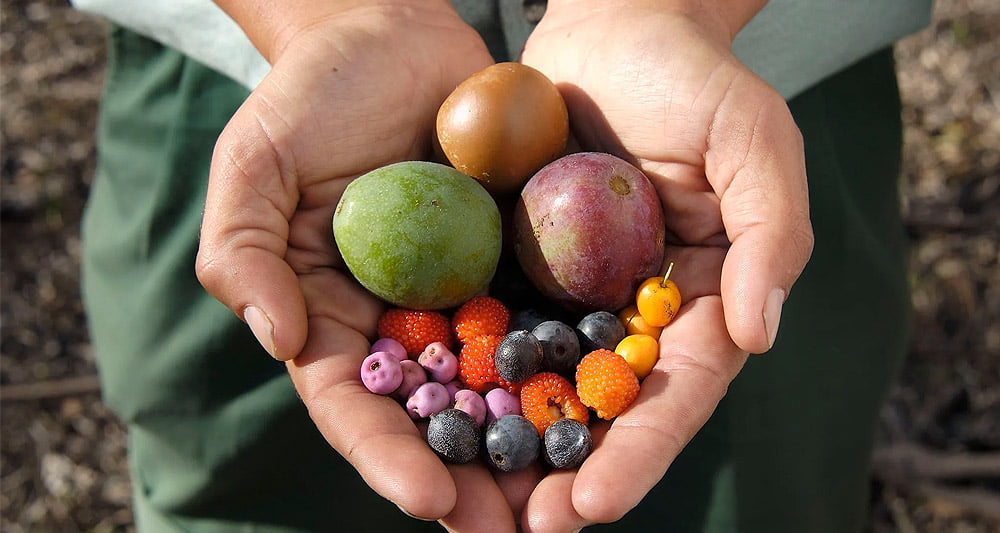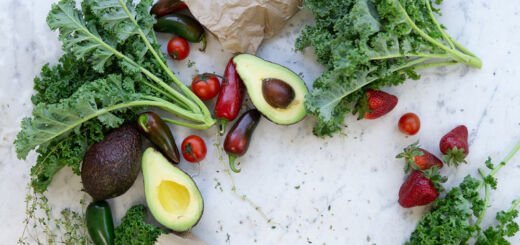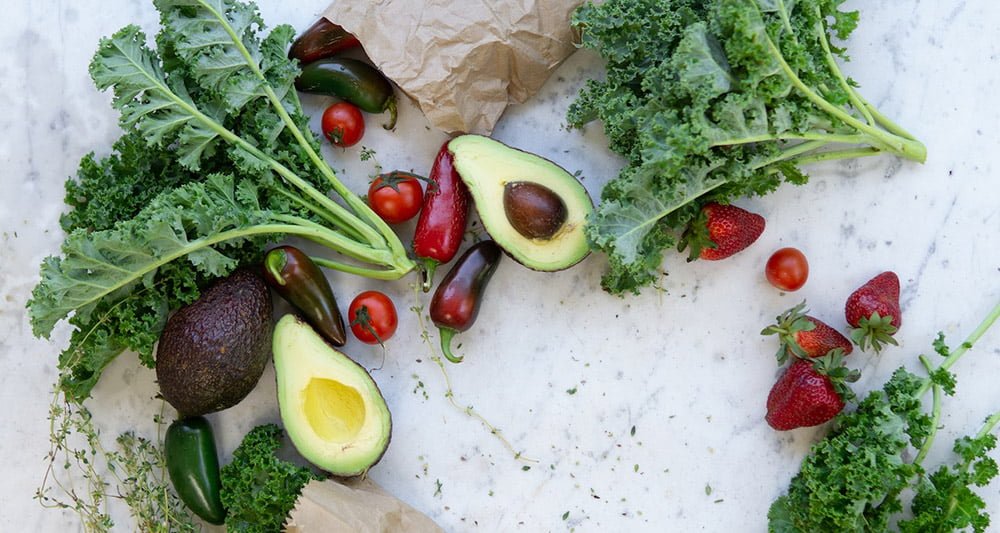Top 10 Indigenous Fruits and Their Health Benefits

With the increasing urbanization and globalization of diets, many people are turning away from traditional food sources, such as indigenous fruits, and towards more readily available, processed foods. This shift in diet has resulted in a lack of essential nutrients and an increase in diet-related health problems. In contrast, incorporating indigenous fruits into your diet can provide a wealth of essential vitamins, minerals, and antioxidants, helping to counteract the negative effects of an urban diet.
What are Indigenous Fruits?
Indigenous fruits are a type of fruit that grows in specific regions, often in areas with a rich cultural history. Indigenous communities have consumed indigenous fruits for generations, making them a staple food source. Found in specific regions, these unique and often exotic fruits grow without modern farming techniques or chemicals. They boast a distinct flavor and aroma, and are prized for their numerous health benefits. Indigenous fruits come in a wide variety of shapes, sizes, and colors, and each type offers its own unique nutritional value.
Do Indigenous Fruits Have More Health Benefits Than Farmed Fruits?
Valuing indigenous fruits for their health benefits is a good reason that has been long accepted. Growing these unique fruits without modern farming techniques or chemicals ensures they are free from harmful additives and packed with natural vitamins, minerals, and antioxidants. In contrast, farmed fruits may contain fewer nutrients and expose to chemicals during growth. Growing indigenous fruits in regions with specific climatic conditions enhances their nutritional value and benefits our health even more. Although both indigenous and farmed fruits offer health benefits, indigenous fruits provide essential nutrients not found in farmed fruits, making them a clear choice.
Discover the untold benefits of these unique and exotic fruits and learn how incorporating them into your diet can have a positive impact on your overall health and well-being. Get ready to be amazed as we dive into the world of indigenous fruits and uncover their hidden treasures.
- Acai Berries
- Goji Berries
- Baobab Fruit
- Camu Camu Berries
- Durian Fruit
- Kakadu Plums
- Noni Fruit
- Rambutan
- Sea Buckthorn Berries
- Tamarillo Fruit
10 Tamarillo Fruit: An Indigenous Superfruit

Availability & Season:
Tamarillo fruit, also known as the “tree tomato”, is native to South America and is widely available in many tropical regions. It is becoming increasingly popular in other parts of the world due to its unique flavor and numerous health benefits. Tamarillo is a seasonal fruit and is typically harvested between the months of January and April. The fruit is at its peak during this time and is considered to be the most flavorful.
Health Benefits:
Tamarillo is an incredibly nutritious fruit, with high levels of vitamins C, A, and B6, as well as potassium and iron. It is also rich in antioxidants, making it a great choice for anyone looking to improve their overall health. In addition, the fruit has a unique flavor that is sweet and tangy, making it a popular choice for those who are looking for a healthy and delicious snack.
Disadvantages:
While tamarillo is a nutritious and delicious fruit, it does have a few disadvantages. Some people find the texture of the fruit to be a bit tough, which can make it difficult to eat raw. Additionally, tamarillo is a tropical fruit, which means that it may not be available year-round in certain regions.
In conclusion, tamarillo is a highly nutritious and delicious indigenous fruit that is packed full of essential vitamins, minerals, and antioxidants. Despite a few disadvantages, this fruit is well worth trying for anyone who is looking to improve their overall health and well-being.
9 Sea Buckthorn Berries: A Nutrient-Packed Indigenous Fruit

Availability & Season:
Sea buckthorn berries, also known as “seaberries”, are native to parts of Europe and Asia. They grow on a shrub that thrives along coastlines and in areas with salty soil. While not as widely available as some other indigenous fruits, sea buckthorn berries are gaining popularity due to their numerous health benefits. These berries are a seasonal fruit, with a harvesting season that typically falls between the months of August and October. During this time, the fruit is considered to be the most flavorful and nutritious.
Health Benefits:
Sea buckthorn berries are loaded with nutrients that are essential for overall health and well-being. They are a rich source of vitamins C and E, as well as other antioxidants that can help to boost immunity and protect against disease. The high levels of carotenoids in sea buckthorn berries have been shown to be beneficial in preventing heart disease and certain types of cancer. Additionally, sea buckthorn berries are believed to help improve digestive health and may even be useful in treating certain skin conditions.
Overall, sea buckthorn berries are a valuable addition to any healthy diet, and are just one of many indigenous fruits that offer numerous health benefits. Whether enjoyed on their own or added to smoothies or other recipes, these nutrient-packed berries are a delicious way to support good health and well-being.
8 Rambutan: The Unique Indigenous Fruit

Rambutan, a spiky fruit native to Southeast Asia, captivates with its vibrant red exterior and sweet, juicy flesh.
Availability and Season of Rambutan:
Rambutan trees grow well in warm climates and are commonly found in Southeast Asia, India, and parts of South America. It is a seasonal fruit, with its peak season being from June to August.
Health Benefits of Rambutan:
Rambutan is a low-calorie fruit with high amounts of vitamins and minerals, making it an excellent addition to any healthy diet. It contains high levels of Vitamin C, which helps boost the immune system and prevent various diseases. The fruit also has antioxidants, making it beneficial in reducing the risk of chronic diseases. Rambutan is also known to have anti-inflammatory properties, making it beneficial in managing various inflammatory conditions such as joint pain and digestive disorders.
Disadvantages of Rambutan:
Rambutan fruit can cause some digestive problems in people who are sensitive to the fruit’s lychee-like taste and texture. The fruit’s seeds can also be a choking hazard for children and pets. Additionally, people with latex allergies should avoid eating rambutan, as it can cause an allergic reaction.
Rambutan is a delicious and healthy addition to anyone’s diet. With its unique taste and high nutritional content, it is no surprise that this indigenous fruit is a popular choice among health-conscious individuals. Just make sure to keep in mind the potential disadvantages and consult with a doctor before including it in your diet.
7 Noni Fruit

Noni fruit comes from the Morinda citrifolia tree, native to Southeast Asia and Australasia. It has a long history of use as a traditional medicine, and has been studied for its potential health benefits.
Availability:
Noni fruit is widely available in markets, health food stores, and online, but its seasonality may vary depending on the location. Some growers also cultivate the tree for its fruit and juice.
Health Benefits:
Noni fruit contains various nutrients, including vitamins, minerals, and antioxidants, and has been associated with various health benefits, such as boosting the immune system, reducing inflammation, and improving digestion. Some studies also suggest that noni fruit may have anti-cancer properties.
Disadvantages:
Despite its potential health benefits, noni fruit and its juice can have a strong, unpleasant odor, and may not be palatable to everyone. It’s important to note that more research is needed to fully understand the effects of consuming noni fruit and its products, and to determine safe and effective dosages.
6 Kakadu Plums

Kakadu Plums are a type of indigenous fruit found in Australia. They are also known as Gubinge, Billygoat Plum, or Murunga. Kakadu Plums are small, round, and bright yellow in color, with a sour taste.
Availability & Season:
These plums are mostly found in the northern regions of Australia, particularly in the Kimberley region. They can be purchased fresh or in dried form and are sometimes used as ingredients in various cosmetic products due to their high vitamin C content. Kakadu plums are seasonal fruits that are available from late December to April. During this time, the plums are harvested, dried and then stored for later use.
Health Benefits:
Kakadu plums contain high levels of antioxidants and vitamin C, making them great for boosting the immune system. They also help in reducing inflammation and have been known to have anti-cancer properties.
Disadvantages:
Despite their many health benefits, Kakadu plums are very sour and may not be suitable for those with a sweet tooth. Additionally, they are not widely available and can be difficult to find outside of Australia.
5 Durian fruit

Durian fruit is a tropical fruit, native to Southeast Asia, known for its unique flavor and strong odor. It is often referred to as the “King of Fruits” due to its large size and creamy texture. Durian is a popular ingredient in many Asian desserts, but its divisive scent makes it a polarizing fruit for many people.
Availability and Season:
Durian is widely available in Southeast Asia and can be found in markets and grocery stores in countries like Thailand, Malaysia, Indonesia, and the Philippines. In other parts of the world, durian is often sold in specialty markets and can be found frozen or canned. The durian season usually begins in June and lasts through August, although the specific harvest time can vary depending on the region.
Health Benefits
Despite its divisive scent, durian is packed with essential vitamins and minerals that offer various health benefits. It is an excellent source of vitamin C, which helps boost the immune system and protect against disease. Durian is also a good source of potassium, which helps regulate blood pressure and supports heart health. Some studies have even shown that durian may have anti-inflammatory properties and may be beneficial in preventing certain types of cancer.
Disadvantages
While durian offers many health benefits, it also has some disadvantages. Firstly, its strong scent can be off-putting to many people, and its flavor is often described as overpowering. Additionally, durian is high in calories and fat, making it a less-than-ideal choice for people watching their weight. Furthermore, durian has been known to cause digestive issues for some people, particularly those with sensitivities to sulfur compounds.
Durian fruit is a unique and polarizing fruit that is beloved by many people in Southeast Asia. Despite its strong scent, it offers numerous health benefits, including high levels of vitamin C, potassium, and anti-inflammatory properties. However, its strong odor and overpowering flavor, combined with its high calorie and fat content, make it a less-than-ideal choice for some people.
4 Camu Camu Barries

Camu Camu Berries are indigenous fruits that are grown along the river banks of the Amazon rainforest. They are small, red or purple berries that are renowned for their high Vitamin C content and numerous health benefits.
Availability & Season:
Camu Camu Berries are grown in South America and are primarily found in the countries of Peru, Brazil, and Colombia. They are becoming increasingly popular around the world as a superfood and are readily available in the form of powders, capsules, and juices. The Camu Camu berry grows best in tropical climates and has a short harvesting season that typically lasts from June to August.
Health Benefits
Camu Camu Berries are often referred to as a “superfood” due to their high levels of antioxidants, Vitamin C, and anti-inflammatory properties. They are considered to be beneficial in treating a variety of diseases, including:
- Common colds and flu
- Arthritis
- Depression
- Skin problems
- Gout
Moreover, Camu Camu Berries are also known to improve brain function, reduce the risk of heart disease, and boost the immune system.
Disadvantages
Despite its numerous health benefits, Camu Camu Berries have a sour and tart taste that may not be palatable to some people. Additionally, the berries are difficult to find fresh and are often expensive in comparison to other fruits.
Camu Camu Berries are an excellent source of antioxidants and Vitamin C, and offer numerous health benefits. While they may not be the most accessible or popular fruit, they are definitely worth trying for those looking to improve their health and wellness.
3 Baobab Fruit: A Nutritious Delight!

Baobab Fruit, also known as the “Tree of Life,” is an indigenous fruit native to Africa. This fruit is famous for its unique and delicious taste and is a rich source of antioxidants, vitamins, and minerals.
Availability and Season:
Baobab Fruit is widely available in Africa and is harvested during the dry season, typically between June and October. In other regions, baobab fruit can be found in specialty health food stores and online.
Health Benefits:
Baobab Fruit is renowned for its many health benefits. It is rich in Vitamin C, an essential nutrient for the immune system, and antioxidants, which protect the body against free radical damage. Additionally, baobab fruit is a good source of fiber and has anti-inflammatory properties, making it an excellent fruit for maintaining digestive health.
Disadvantages:
Baobab Fruit’s tart flavor may not suit everyone, and it costs relatively high compared to other fruits. However, for those who enjoy its unique flavor, baobab fruit is well worth the investment for its many health benefits.
2 Goji Berries: The Red Wonder Fruit

Centuries of Chinese medicine and cuisine have treasured small, red, sweet-tart Goji berries. These indigenous fruits are now popular around the world for their health benefits.
Availability & Season:
Goji berries are widely available in dried form in health food stores, supermarkets, and online. They are also available in the form of supplements, teas, and juices. Goji berries grow on goji berry bushes and are native to China, Mongolia, and the Himalayan regions of Tibet and Nepal. The berries are harvested in late summer and early fall.
Health Benefits:
Goji berries boast antioxidants, vitamins, and minerals, and traditional Chinese medicine uses them to enhance health and longevity. Believed to enhance the immune system, improve eyesight, defend against heart disease and cancer, and decrease inflammation. Additionally, goji berries are high in fiber and low in calories, making them a great snack option for those looking to maintain a healthy weight.
Disadvantages:
Goji berries may interact with certain medications, such as blood thinners and diabetes drugs, so it is best to talk to your doctor before incorporating them into your diet. Some people may also experience digestive discomfort after consuming large amounts of goji berries.
Despite these potential drawbacks, goji berries are a delicious and nutritious addition to any diet, and a great way to incorporate the health benefits of indigenous fruits into your daily routine.
1 Acai Berries: The Superfood from the Amazon

Acai berries are indigenous fruits that are native to the Amazon rainforest. These small, purple berries are well-known for their rich taste and powerful health benefits.
Availability & Season:
Acai berries are widely available in many health food stores and online retailers. Harvesting of Acai berries takes place in the Amazon rainforest between June and December. They typically sell in frozen form, dried powder, or juice form.
Health Benefits:
Acai berries are rich in antioxidants, fiber, healthy fats, and other essential vitamins and minerals. Studies show that they positively impact cardiovascular health, improve digestion, boost energy levels, and fight chronic diseases. Some research has also suggested that they may help to improve brain function, reduce inflammation, and support healthy weight loss.
Disadvantages:
There are few disadvantages to consuming acai berries. However, some people may experience an upset stomach, diarrhea, or allergic reactions. Additionally, acai berries can be expensive due to their popularity and limited availability in some areas.
Overall, acai berries are a tasty and nutritious addition to any diet, offering a wide range of health benefits. Whether consumed in juice form, smoothies, or as part of a larger meal, these indigenous fruits are a great way to boost your overall health and wellbeing.
Conclusion:
Embrace the power of nature and make a difference for your health by incorporating top 10 indigenous fruits in your diet. Before consuming these fruits, you should consult a diet specialist or your doctor to ensure they meet your health needs. These fruits can offer numerous health benefits and provide a natural alternative to processed food and farm fruits. So, make a smart choice, ditch the processed food and add these superfruits to your daily routine today! Your body will thank you.













Great information!